Entering into US session, Dollar is trading as the strongest one today as post FOMC rally continues. As noted in our report, there were hawkish elements in Fed’s projections and overall announcement should be Dollar positive. Yen follows as the second strongest one for now, and then Sterling. Swiss Franc is suffering another day of selling and remains overwhelmingly weak for the week. Australian Dollar is the second weakest.
There are a lot of headlines flying around regarding Italy’s 2019 budget, be it 2% of GDP or 2.4% or something else. Or whether Economy Minister Tria will resign or not. Euro, is just mixed, today, and it’s up against Swiss Franc, Australian Dollar at the time of writing.
European stocks opened lower earlier today but quickly pared losses. FTSE is up 0.29%. DAX is down just -0.05% and CAC down -0.03% at the time of writing. German 10 year bund yield also dipped blow 0.5 handle earlier today but it’s now by at 0.511, down just -0.016. Earlier in Asia, major indices all closed in red. Nikkei was down -0.99%, Hong Hong HSI down -0.36%, China Shanghai SSE down -0.36%, Singapore Strait Times also down -0.09%.




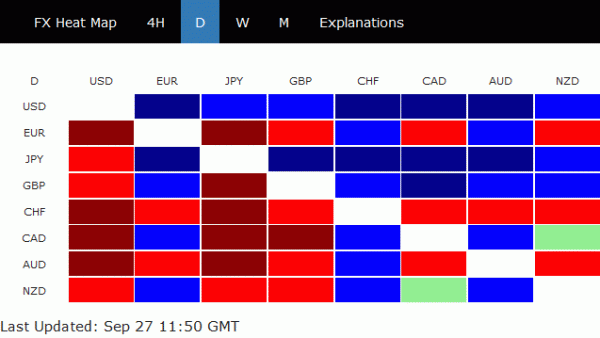
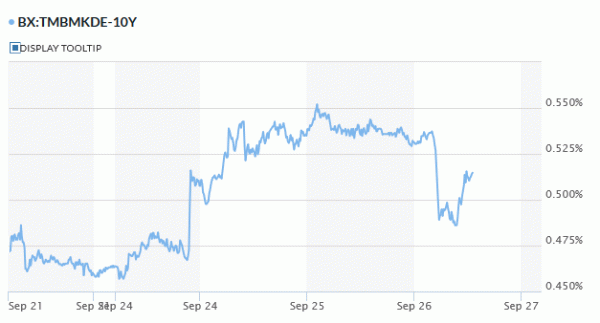
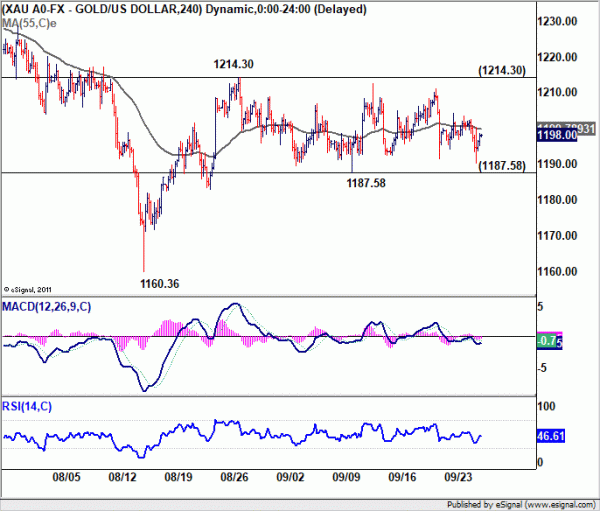
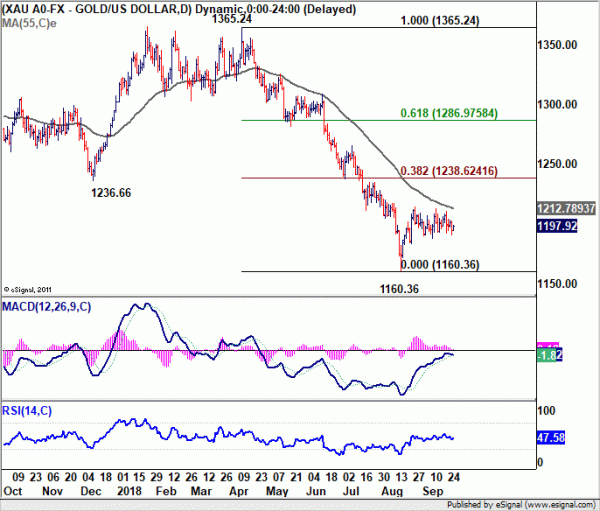
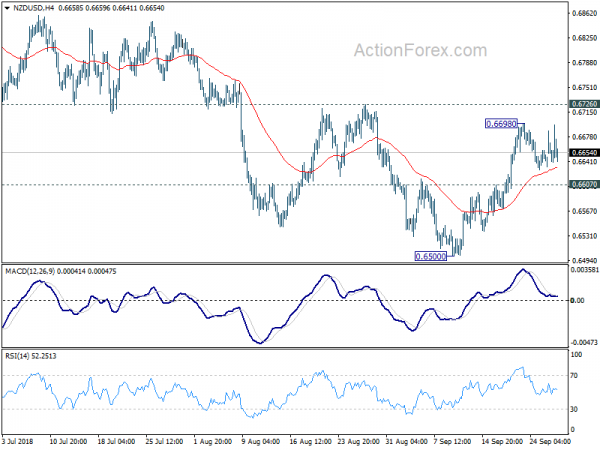
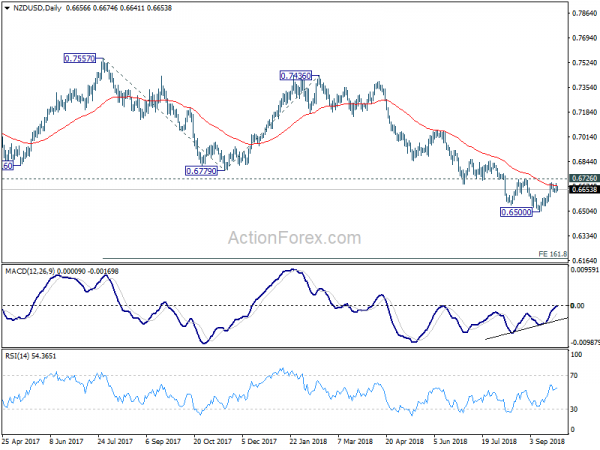

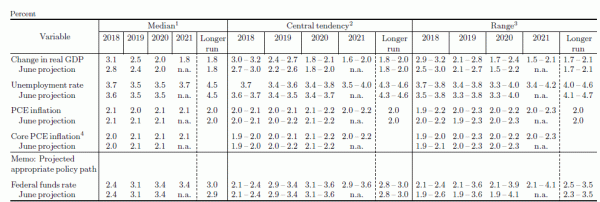
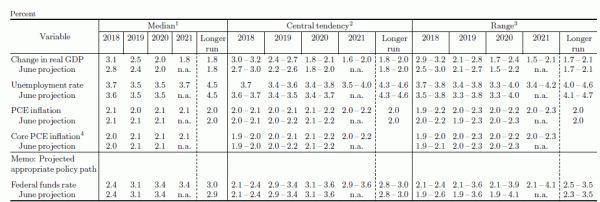
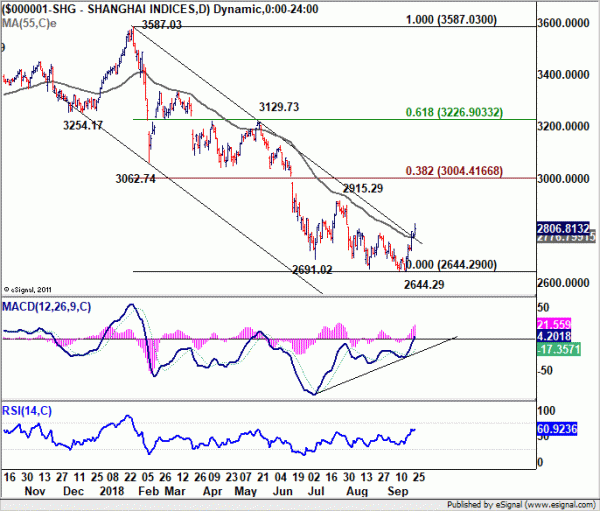
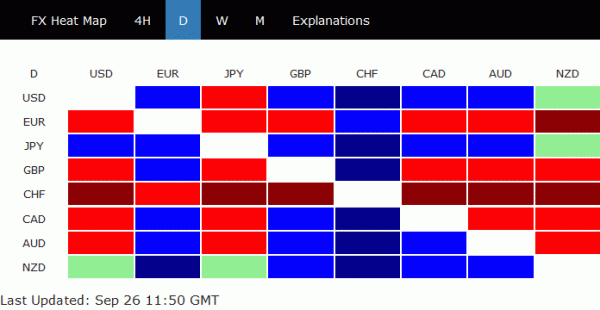
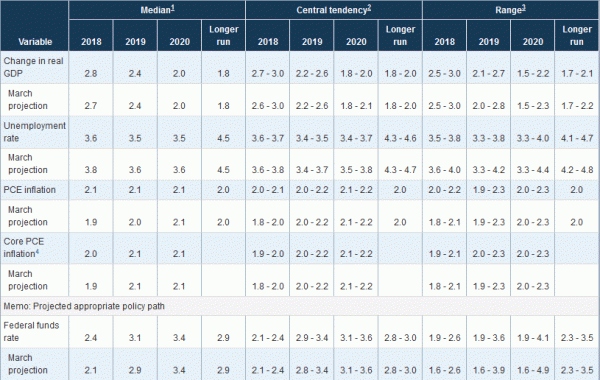

US jobless claims rose 12k to 214k, headline durables jumped 4.5% but ex-transport missed
A batch of mixed data is released from the US today. Initial jobless rose 12k to 214k in the week ended September 22, above expectation of 208k but stayed low. Four-week moving average of initial claims rose 250 to 206.25k. Continuing claims rose 16k to 1.611m in the week ended September 15. Four-week moving average of continuing claims dropped -12.25k to 1.6915m, lowest since November 10, 1973.
Headline durable goods order jumped sharply by 4.5% in August, above expectation of 1.5%. But ex-transport orders rose only 0.1%, missed expectation of 0.3%. Wholesale inventories rose 0.8% mom in August, above expectation of 0.3% mom. Q2 GDP was finalized at 4.2% annualized, unrevised. Trade deficit widened to USD -75.8B in August. GDP price index was revised up to 3.3%, from 3.0%.